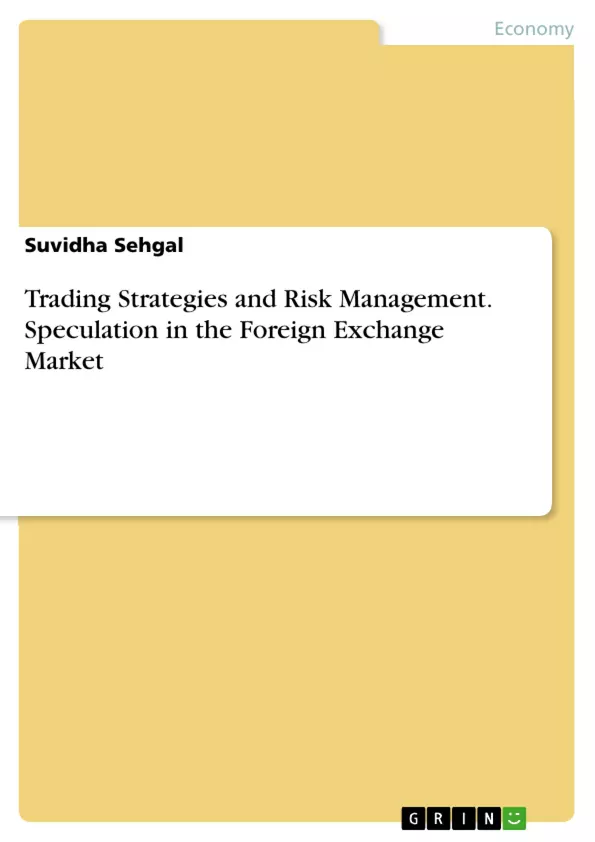Trading is done in various commodities and is as well carried out in different markets. Amongst all the popular traded commodities like shares, gold, cryptocurrencies, trading in currency has seen to be the most popular. The Foreign Exchange market is the place where trading in currencies is carried out. The growing demand among most people of exchanging their domestic currencies in order to carry out any foreign trade or business has made this as the primary reason of the FX market being one the largest and most liquid financial market worldwide.
This report is based on the analysis conducted as per the results of a demo trading session undertaken over easyMarkets platform. The main aim of the analysis is to recognize the type of trading strategies that are applied by traders while carrying out transaction in various currency pairs along with the applying one of the strategies in the demo trading undertaken. The results are based on the 13 trades that were carried out. The later part of report also highlights the importance and application of risk management tool in order to hedge maximum amount of risk involved. The concluding statement put together the importance of hedging tools stating they might not be able to mitigate or eliminate the risk completely yet does make sure that some amount of it covered thus deceasing the risk of exposure to at least some extent.
Frequently asked questions
What is the executive summary about?
The executive summary discusses trading in various commodities and markets, with a focus on the Foreign Exchange (FX) market. It highlights the growing demand for exchanging domestic currencies for foreign trade or business. The report is based on an analysis of a demo trading session on the easyMarkets platform, aiming to identify trading strategies and apply one of them. It also emphasizes the importance of risk management tools in hedging risks.
What is the introduction about?
The introduction states that there isn't an exact strategy or factors that could be used to analyze movements in the exchange rate and enable efficient decision making. Traders commonly follow trends, considering market timing. It also mentions that this report will highlight the trading strategy used in currency transactions, with explanations for profits or losses, and any hedging activities.
What are some trading strategies mentioned?
The document mentions various active trading techniques. These include Day Trading, Position Trading, Swing Trading, and Scalping.
What is Day Trading?
Day Trading involves buying and selling securities within the same day, with all positions closed on the same day they are opened. It aims to test market timing.
What is Position Trading?
Position Trading involves using long-term charts and methods to determine trends in the prevailing price direction of securities. Trades may last for weeks or longer, depending on the trend.
What is Swing Trading?
Swing Trading focuses on achieving smaller gains over short-term trends while avoiding losses. Positions are held for a few days up to a week, and consistency can result in significant returns.
What is Scalping?
Scalping is the quickest strategy, exploiting price gaps due to bid-ask spreads. Transactions occur at the bid price and close at the ask price, with positions held for a short period to minimize risk.
What currency pairs are analyzed?
The report analyzes the EUR/USD and USD/JPY currency pairs.
What does the analysis of EUR/USD cover?
The analysis of EUR/USD notes the importance of this pair to the United States and the European Union economies. Its high liquidity and volatility make it an appropriate choice for day trading.
What does the analysis of USD/JPY cover?
The analysis of USD/JPY considers Japan's economy and its significant trade with the USA, Asia, and Europe. It mentions that the availablity of low interest rates USD/YEN is as well one of the preferred pairs for the investors to trade in.
What risk management techniques are discussed?
The document briefly mentions hedging techniques, specifically forward contracts, as a method to mitigate risks in foreign currency transactions. Forward Contracts involve getting into a contract where the buying or selling price of a currency is pre specified.
What is the overall conclusion?
The overall conclusion emphasizes the importance of using hedging techniques to mitigate risk in the foreign exchange market. It states that although adopting a risk management technique might or might not help in eliminating the risk completely, it is always preferred to undertake efficient hedging technique.
- Arbeit zitieren
- Suvidha Sehgal (Autor:in), 2018, Trading Strategies and Risk Management. Speculation in the Foreign Exchange Market, München, GRIN Verlag, https://www.hausarbeiten.de/document/427005


